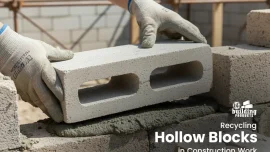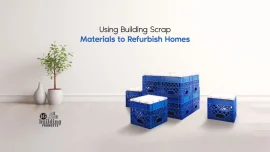
Why Sourcing Green Building Materials Matters
With the rise of global warming impacts, focusing on reducing carbon emissions is crucial. Additionally, construction professionals are dealing with material shortages and supply chain gaps due to pandemic-related shifts. This is an ideal time to reassess the sourcing of building materials and progress towards more sustainable, eco-friendly processes.
The architecture, engineering, and construction (AEC) industries account for around 40% of the world’s carbon emissions, the highest for any specific industry. If we want to preserve our Earth so that at least our future generations can reap some of its benefits, we need to be mindful of the main source of our raw materials.
An emphasis has recently been put on the importance of sustainable or green construction materials. Sustainable materials promote resource conservation, waste reduction, and energy efficiency, and are usually made from renewable materials such as wood, cork, bamboo, etc.
Another way to minimize the carbon footprint in this sector is by making sure the techniques used are eco-friendly compared to the previous traditional ones. In the case of hollow or solid blocks made of cement, the cement in question has to be ethically sourced, and contain materials like slag or fly ash to reduce waste. Finding a trusted supplier for raw materials is also crucial to ensure that the end products are of the highest quality and create the lowest waste. Look for suppliers with accreditations and certifications that are internationally recognized. A great way to ensure the sourced raw materials are green is to choose a local manufacturer renowned for sourcing ethically and sustainably.
To make sure fewer building products are wasted, another idea or concept is used in partial renovation or redecoration. This will allow us to reduce product wastage, minimize the use of brand-new products that are costlier, and use environmentally hazardous or harmful substances to cut down on total costs
With our Earth’s natural resources slowly but surely diminishing, we must make sure that we reduce our carbon footprint. It is the only way we can at least try to save some of our current resources for future generations to enjoy. By opting to go the green route for ethically sourced building products, it is possible to cut down on a majority of our carbon emissions. Since sustainable or green architecture is also where our future will ultimately lie, the sooner industries like building and construction will be able to adapt to these changes. This will also be the more feasible route of action, since making typical clay bricks tends to cause more pollution, as do the steel rods used to reinforce the structures of buildings. Materials like bamboo, wood, cork, etc. can be reused to increase the efficient use of energy in construction.
There are many ways in which we need to make the most out of our situation with regard to using raw materials that have been sourced ethically and have zero to low carbon emissions. Green building materials will not only be better for the environment, but they could potentially allow us to save some resources that future generations could get great use out of. Add to that the benefits to our environment, and the potential for green building materials to create a brighter future for upcoming generations are endless.




